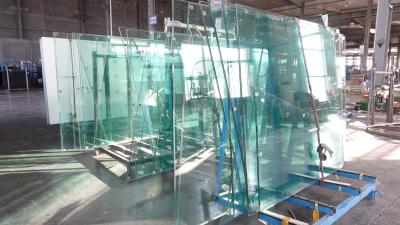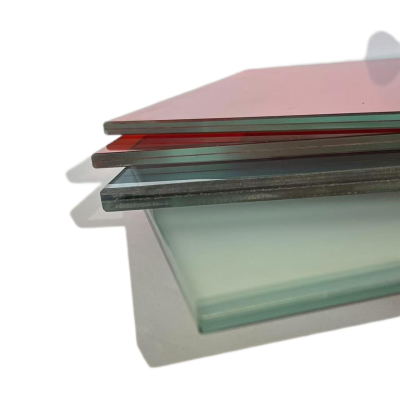Causes of mold on glass & How to deal with
Causes of mold on glass & How to deal with
Glass mold is an industrial problem in the glass industry. Every spring and summer, due to the high temperature and high humidity weather, the glass rainbow/stain enters a peak period. Therefore, how to do a good job of preventing glass rainbow/stain has become the primary task of us.
1. Reasons of mold:
Glass used in daily life is mostly made of quartz sand (SiO2), soda ash (Na2CO3), limestone (CaCO3) and feldspar, among which SiO2 (about 72%), Na2O (about 15%) and CaO (content about 9%), so called soda lime glass, is widely used due to its low cost. According to research, during the annealing process of soda lime glass, alkali ions will move to the glass surface, making ion exchange easy on the glass surface; for example, the glassy Sio2 on the surface can be hydrolyzed. Therefore, when soda-lime glass is stored in a humid environment, water or moisture will be adsorbed on the glass surface and gradually diffuse into the glass. Carbonic acid (H2CO3) formed by (H2O) and carbon dioxide (CO2) will produce orthosilicic acid (H4SiO4) that is weaker than carbonic acid. If the saturated orthosilicic acid (H4SiO4) solution is placed for a long time, there will be amorphous Silica (SiO2) precipitates, milky white in color, and appears as colloidal particles, precipitates or gels.
2. Glass mold is generally divided into five stages:
2.1 Initially, water or moisture is adsorbed on the glass surface.
2.2 Subsequently, water or moisture diffuses into the glass.
2.3 Soluble silicates in the surface layer are hydrolyzed and destroyed. The first is that sodium silicate and potassium silicate are hydrolyzed and destroyed. Caustic soda (NaOH) is formed and SiO2 is separated.
2.4 The separated SiO2 forms a silica gel, which forms a protective film on the glass surface, which prevents further erosion.
2.5 The caustic soda formed by hydrolysis reacts with carbon dioxide in the air to form sodium carbonate, which accumulates on
the glass surface to form soluble salts in the surface film. Due to its strong hygroscopicity, it absorbs water and deliquesces, and
finally forms small droplets of lye. When the surrounding temperature and humidity change, the concentration of these
droplets also changes. If the concentrated lye droplets are in contact with the glass for a long time, the gelatinous silicon oxide
film can be partially dissolved in it, and the glass surface will undergo severe local erosion and form spots. This is a white
alkali-rich ion group formed by the migration of sodium ions from the glass body and the reaction with air. Scanning electron
microscope can observe white particles.
3. Appearance of mold on glass:
3.1 White fog, white spot: The slightest mildew on the glass surface due to storage time, air humidity, or glass quality.
3.2 Rainbow: When the white fog and white spots appear for a long time and are not treated in time, a rainbow will be formed.
At this time, the mildew only stays on the surface of the glass and does not corrode into the glass.
3.3 Sulfur: The appearance of moldy glass is the same as mild moldy, but the alkaline moldy components on the glass surface
have corroded into the glass, which is a serious moldy.
3.4 Paper printing: Like sulfuration, mold is on the outside and inside of the glass, which is a serious mold.
4. How to deal with moldy glass:
Glass mildew (also known as anti-alkali) is a chemical reaction caused by the glass being stored for too long or the weather is humid; rainbows, mildew, watermarks, mimeographs, paper grains and other phenomena appear on its surface under the sunlight; use ordinary water Or chemical potions cannot be removed; solution: glass mold remover, which is a glass treatment liquid.
4.1 Glass mold remover;
[Scope of application] Applicable to all slightly moldy glass products (such as color red, mildew, water marks on the glass after edging)
[How to use] Dip a little of this product with a cleaning cloth or sponge and wipe it on the moldy place on the glass for a few times, then rinse it off with clean water, you can make the moldy product look new and get the results you are satisfied with. This product has no effect on people and the environment.
4.2 De-papering liquid;
[Scope of application] It is suitable for glass products with moldy time, paper texture and paper printing
[How to use] Put the glass into the original solution and soak it for 5-8 minutes, then rinse it with clean water, the effect is as smooth as new, this product has no impact on people and environmental protection, it is an environmental protection series product on the market.
Thank you.
Tony En
0086 15169185915


































































































































































































